Don't hesitate to send a message
Why Electric Front Hub Motors Are Transforming Urban Transportation
Content
- 1 A New Era in Urban Mobility
- 2 Understanding Electric Front Hub Motors
- 3 Advantages of Electric Front Hub Motors in Urban Transportation
- 4 Applications of Electric Front Hub Motors in Urban Transportation
- 5 Technological Innovations Driving EFHMs
- 6 Market Trends and Adoption
- 7 Challenges and Considerations
- 8 Future Outlook
A New Era in Urban Mobility
As cities worldwide grapple with traffic congestion, pollution, and the growing demand for efficient transportation, electric mobility solutions are gaining unprecedented attention. Central to this transformation is the electric front hub motor (EFHM) — a compact, efficient, and high-performance technology reshaping how vehicles move in urban environments.
Unlike traditional powertrains, which rely on complex mechanical components and centralized engines, electric front hub motors integrate the motor directly into the wheel hub. This innovation not only simplifies drivetrain architecture but also offers superior efficiency, enhanced vehicle control, and scalable applications across electric cars, e-bikes, scooters, and micro-mobility solutions.
Understanding Electric Front Hub Motors
An electric front hub motor is an electric motor mounted directly within the front wheel hub of a vehicle. It generates torque that drives the wheel without the need for traditional transmission components like axles, gearboxes, or differential systems.
Key characteristics of EFHMs include:
Direct Drive: Motor power is delivered straight to the wheel, reducing energy losses in the drivetrain.
Compact Design: Integrating the motor into the wheel saves space, allowing more flexible vehicle layouts.
Enhanced Torque Control: Independent control of front-wheel torque improves traction, acceleration, and braking response.
Lightweight Architecture: Simplifies vehicle weight distribution, improving efficiency and handling.
Scalable Technology: Applicable to a wide range of vehicles, from small electric scooters to full-size electric cars.
By combining these features, EFHMs offer unmatched efficiency, reliability, and performance in urban mobility contexts.
Advantages of Electric Front Hub Motors in Urban Transportation
Simplified Drivetrain Reduces Maintenance
Traditional vehicles rely on engines connected to transmission systems, axles, and differentials — each adding weight, friction, and maintenance needs. EFHMs eliminate many mechanical components, reducing:
Gearbox maintenance
Axle lubrication requirements
Transmission-related energy losses
For urban vehicles operating in stop-and-go traffic, reduced mechanical complexity translates into lower operating costs and improved reliability.
Enhanced Maneuverability in Congested Cities
Urban driving often requires tight turns, frequent stops, and precise acceleration control. EFHMs provide:
Independent wheel torque control for improved handling
Regenerative braking integrated directly at the wheel hub
Agile response in congested environments
This capability is particularly beneficial for electric micro-mobility vehicles, small EVs, and light commercial vehicles navigating narrow city streets.
Increased Energy Efficiency
Energy efficiency is crucial in electric vehicles, especially in urban stop-and-go conditions. EFHMs:
Deliver direct torque to the wheels, minimizing transmission losses
Optimize energy recovery through regenerative braking
Reduce overall vehicle weight, extending driving range
For city commuters, this translates into longer range per charge, lower operating costs, and smaller environmental footprints.
Lightweight, Flexible Vehicle Design
EFHMs allow front-wheel drive EVs to forego traditional engine placement and complex transmission tunnels. Benefits include:
More cabin space for passengers or cargo
Lower vehicle weight, enhancing acceleration and efficiency
Simplified assembly, reducing production costs
This flexibility enables urban vehicle manufacturers to design compact, lightweight, and versatile vehicles ideal for crowded metropolitan areas.
Quiet, Smooth, and Clean Operation
Electric front hub motors generate minimal noise and vibration. Combined with the absence of exhaust systems, EFHMs:
Reduce urban noise pollution
Offer a smoother ride for passengers
Support sustainable, zero-emission mobility initiatives
The quiet, clean operation of EFHM-powered vehicles aligns perfectly with smart city and sustainable urban transport strategies.
Applications of Electric Front Hub Motors in Urban Transportation
EFHMs are versatile, supporting a wide range of urban mobility solutions:
Electric Micro-Mobility Vehicles
E-bikes, scooters, and small electric motorcycles benefit from:
Lightweight front hub motors for efficient torque delivery
Regenerative braking and independent wheel control
Compact designs suitable for urban navigation
These vehicles are increasingly popular in ride-sharing platforms and last-mile delivery services.
Electric Passenger Vehicles
Small city cars and compact EVs leverage EFHMs to:
Reduce weight and mechanical complexity
Optimize front-wheel drive performance for city streets
Improve energy efficiency and battery range
Some advanced vehicles even employ dual hub motors for all-wheel drive, enhancing traction and safety in urban traffic conditions.
Commercial and Delivery Vehicles
Urban logistics vehicles, like delivery vans and cargo trikes, can integrate EFHMs for:
Reduced maintenance and operating costs
Enhanced maneuverability for narrow streets and tight parking
Quiet, emission-free operation in densely populated areas
This makes EFHMs ideal for urban last-mile delivery, where efficiency, reliability, and environmental compliance are crucial.
Technological Innovations Driving EFHMs
Recent advancements are enhancing EFHM performance and adoption:
High Torque-Density Motors: Modern designs achieve high power output in compact sizes, enabling heavier vehicle payloads.
Advanced Cooling Solutions: Efficient thermal management ensures long-term durability, even under continuous urban stop-and-go cycles.
Integration with Vehicle Electronics: EFHMs are compatible with smart vehicle systems, allowing torque vectoring, traction control, and regenerative braking optimization.
Lightweight Materials: Use of aluminum and composite components reduces unsprung weight, improving handling and ride comfort.
Sensor and AI Integration: Predictive maintenance and performance monitoring are increasingly incorporated to prevent failures and optimize efficiency.
These innovations position EFHMs as a cornerstone technology for next-generation urban mobility solutions.
Market Trends and Adoption
The EFHM market is expanding rapidly, driven by:
Urbanization: Growing city populations demand compact, efficient, and low-emission vehicles.
Electric Vehicle Adoption: Governments incentivize EV adoption, creating strong demand for efficient drivetrain solutions.
Ride-Sharing and Micro-Mobility Growth: EFHMs power scooters, bikes, and light EVs used in shared mobility services.
Sustainability Goals: Cities aiming for reduced emissions and noise benefit from EFHM-integrated vehicles.
According to recent research, the global hub motor market is projected to exceed USD 5 billion by 2030, with urban EVs and micro-mobility vehicles accounting for the majority of demand.
Challenges and Considerations
Despite their advantages, EFHMs face certain challenges:
Unsprung Weight: Hub motors add weight to the wheel, potentially affecting ride comfort and suspension design.
Cost of Advanced Materials: High-performance motors with lightweight and durable materials can be expensive.
Thermal Management: Continuous urban use generates heat; efficient cooling is essential for reliability.
Integration Complexity: Designing vehicle control systems to fully leverage independent wheel torque requires sophisticated electronics.
Manufacturers address these challenges through innovative suspension designs, lightweight components, and advanced motor control algorithms.
Future Outlook
The future of EFHMs in urban transportation is promising:
Integration into Autonomous Vehicles: Hub motors enable precise torque control, enhancing self-driving vehicle performance.
Expansion in Commercial Mobility: EFHMs will be increasingly used in urban delivery and logistics fleets.
Smart City Mobility Solutions: EFHM-powered vehicles align with clean mobility and smart city infrastructure, supporting emission reduction goals.
Advances in Lightweight Materials and AI: Continued R&D will optimize efficiency, reduce weight, and enable predictive maintenance for reliable urban operation.
These trends suggest that EFHMs will be central to the next generation of urban transport systems, combining efficiency, sustainability, and versatility.
-
 E-Type F500 Front Hub Motor
E-Type F500 Front Hub MotorThe E-Type F500 front hub motor is designed for E-Cargo and E-MTB bikes, offerin...
-
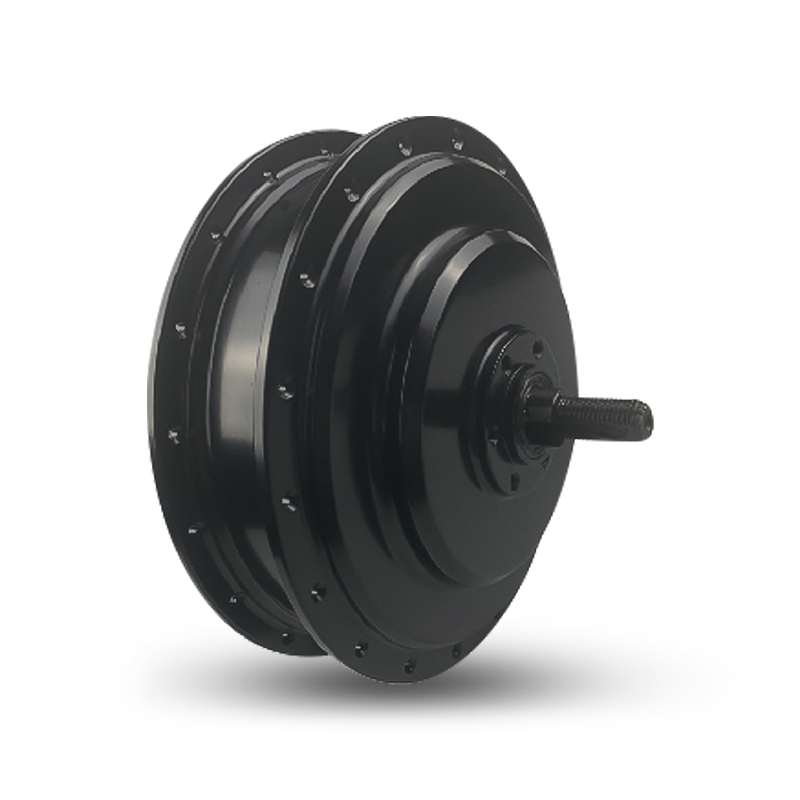 E-Type Pro RC750 Rear Hub Motor
E-Type Pro RC750 Rear Hub MotorThe E-Type Pro RC750 Rear Hub Motor is designed for E-Cargo and E-MTB bikes, com...
-
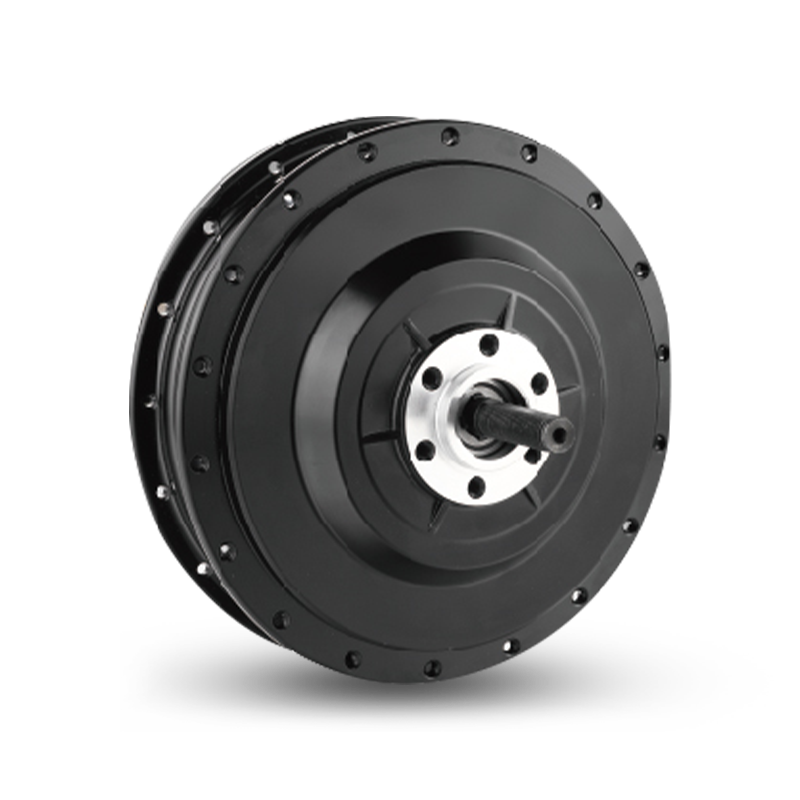 E-Type RF500 Rear Hub Motor
E-Type RF500 Rear Hub MotorThe E-Type RF500 Rear Hub Motor is designed for E-Cargo and E-MTB bikes, compati...
-
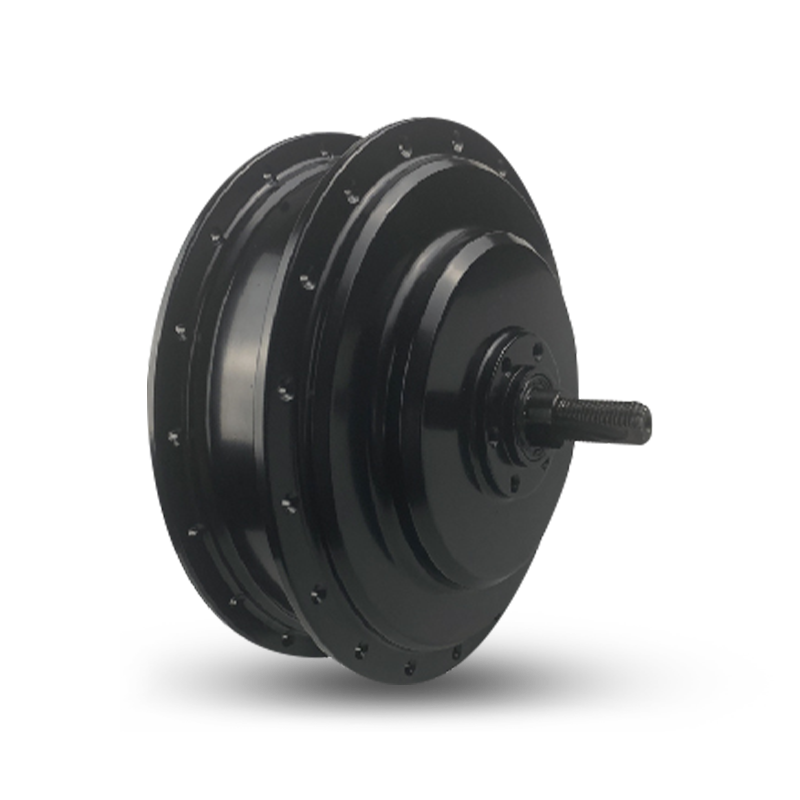 E-Type Pro RF750 Rear Hub Motor
E-Type Pro RF750 Rear Hub MotorThe E-Type Pro RF750 Rear Hub Motor is designed for E-Cargo and E-MTB bikes, com...
-
 S-Type Pro F1500 Front Hub Motor
S-Type Pro F1500 Front Hub MotorThe S-Type Pro F1500 front hub motor, designed for E-Carao and E-Fat bikes, offe...
-
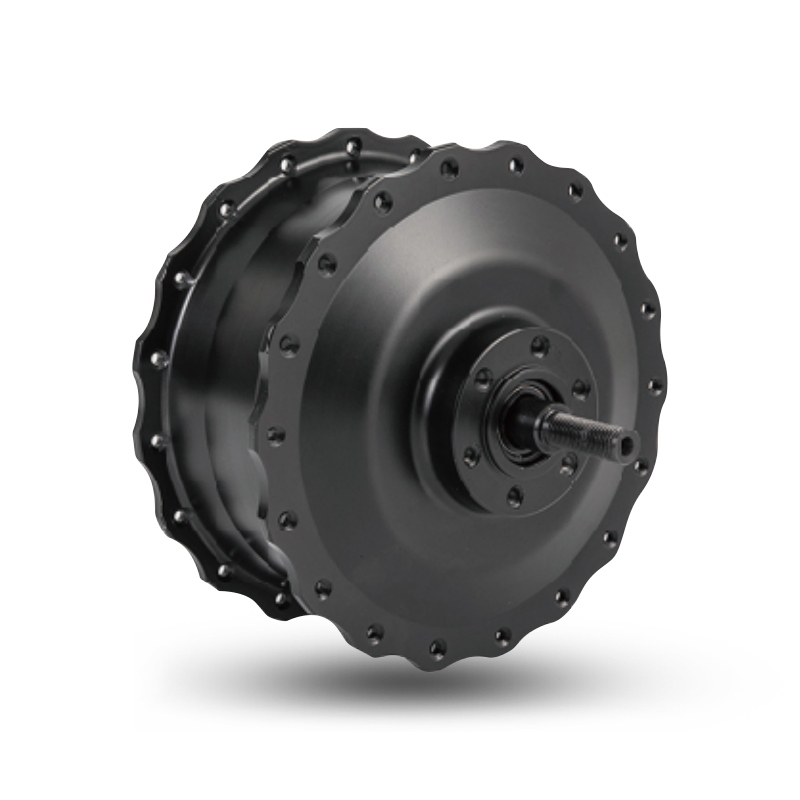 S-Type F750 Front Hub Motor
S-Type F750 Front Hub MotorS-Type F750 is designed for E-Cargo and E-Fat. The rated power ranges from 500W ...
-
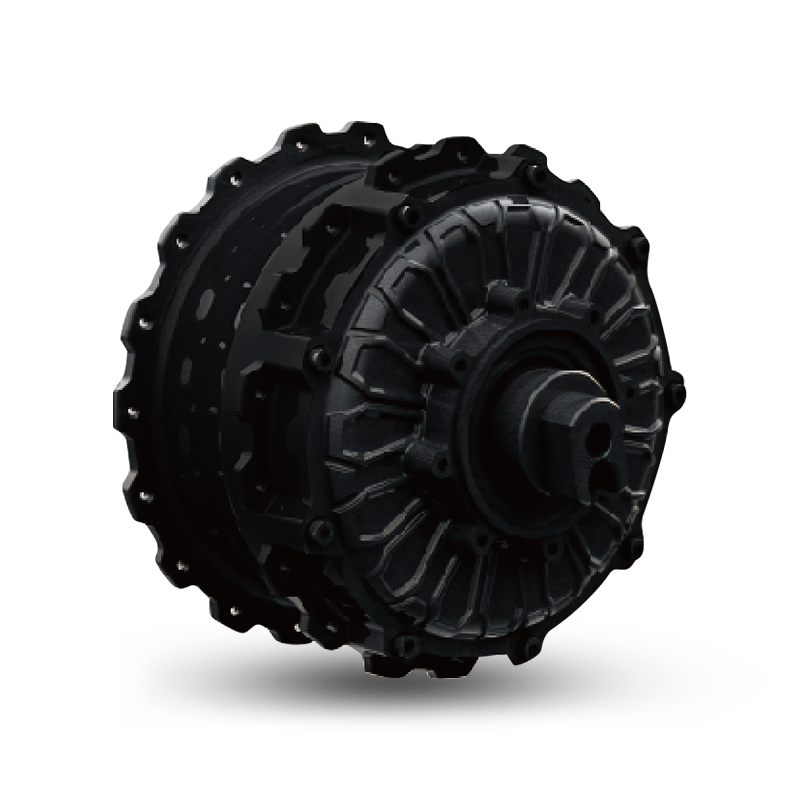 S-TYPE Max THRU AXLE Rear Hub Motor
S-TYPE Max THRU AXLE Rear Hub MotorThe S-TYPE Max thru-axle motor is designed for E-Fat, Moped, and Cargo applicati...
-
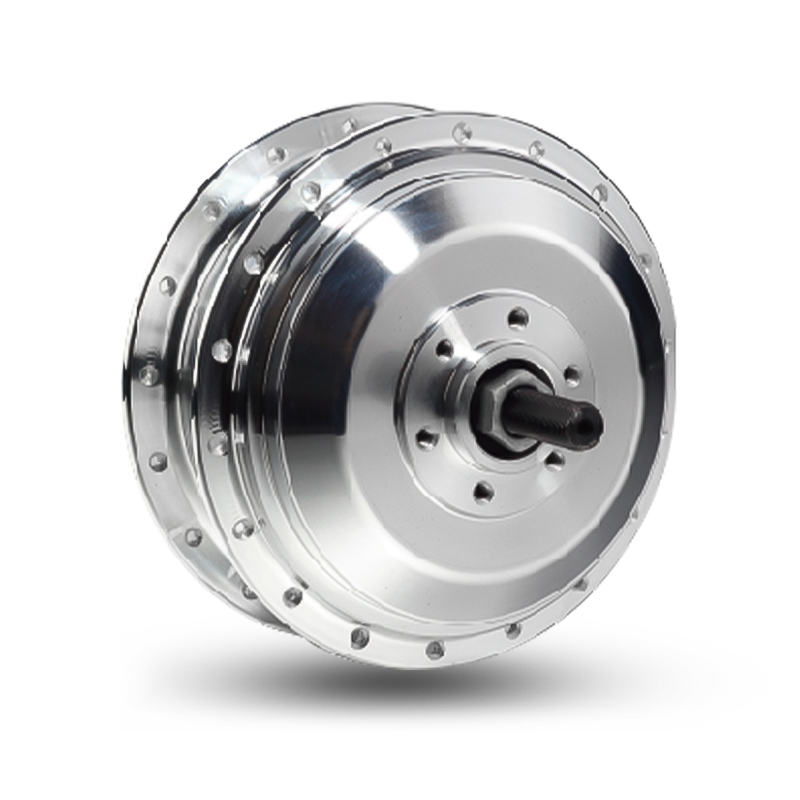 C-Type R350 Rear Hub Motor
C-Type R350 Rear Hub MotorThe C-Type R350 Rear Hub Motor, designed for city e-bikes, offers a rated power ...
If you are interested in our products, please consult us
- Address:No. 3 Dingqiao Rd, Jiangshan Town, Yinzhou District, Ningbo, Zhejiang Province, China
- Phone: +86 13806662915
- Email: K.zhang@hengtai-cn.com



 English
English 中文简体
中文简体